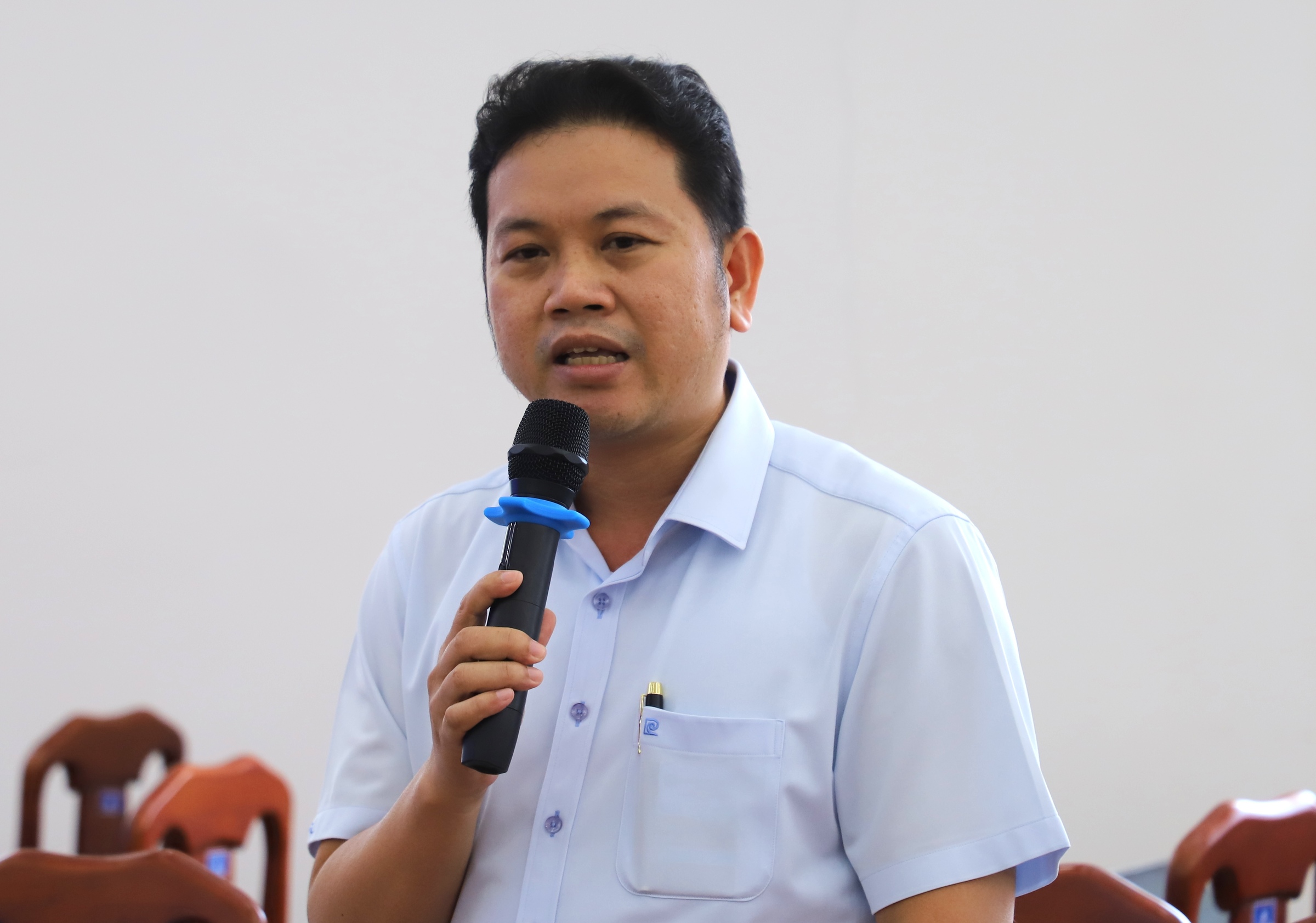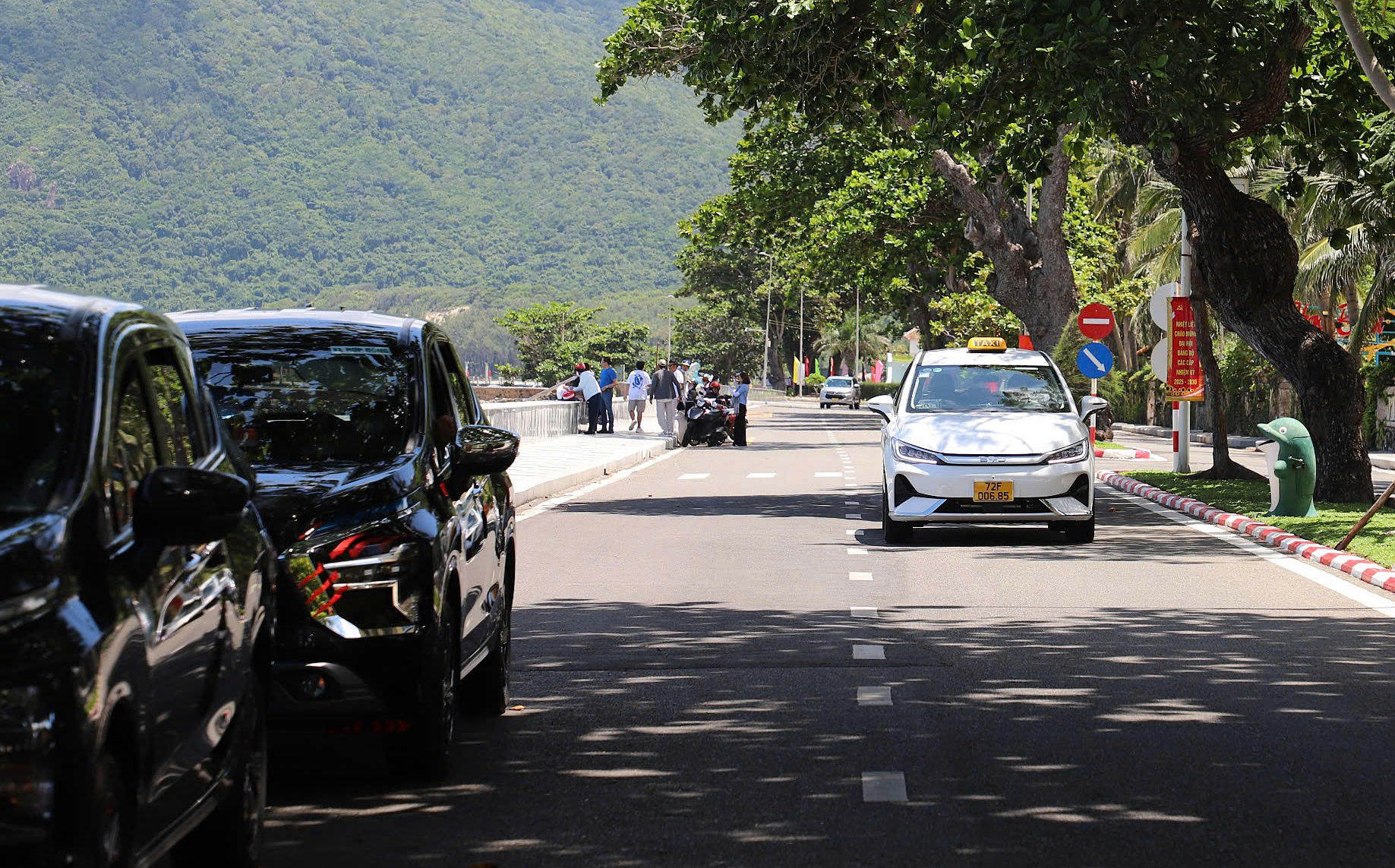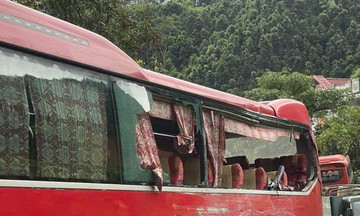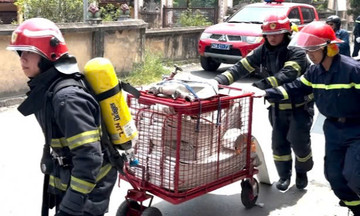This information was announced by Pham Vuong Bao, deputy director of the Public Transport Management Center (Ho Chi Minh City Department of Construction), at the scientific workshop "Launching green transition programs in the Con Dao special zone" co-organized by the Ho Chi Minh City Development Research Institute, the Con Dao special zone People's Committee, and VinUni University on 7/8.
According to Mr. Bao, Con Dao's rapidly growing population and large number of tourists are putting pressure on the transportation infrastructure, while public transport is almost non-existent. This will be the first time Con Dao has a public passenger transport system. The six electric bus routes will have a total length of nearly 72 km, with each route using five 40-seat vehicles, departing every 15 minutes.
 |
Pham Vuong Bao, deputy director of the Public Transport Management Center, Ho Chi Minh City Department of Construction, speaks at the workshop on 7/8. Photo: Le Tuyet |
Pham Vuong Bao, deputy director of the Public Transport Management Center, Ho Chi Minh City Department of Construction, speaks at the workshop on 7/8. Photo: Le Tuyet
The planned routes include: Con Dao center - airport, center - Ben Dam port, routes around the center, connecting the northwest and southeast regions of the island, and a tourist route passing through tourist attractions, hotels, and accommodation areas.
The Public Transport Management Center also proposed several policies to attract business investment, such as: low-interest loans for infrastructure construction, exemption or reduction of land rental fees for depots, maintenance support, and operational subsidies if revenue is insufficient to cover costs.
In parallel, the center proposed promoting the transition of personal vehicles from gasoline to electric. Specifically, from 2026, buyers of electric motorbikes will receive a 50% reduction in registration fees and license plate issuance. Poor and near-poor households will receive 80-100% support for the cost of exchanging or buying vehicles under 20 million VND. In addition, there is a policy for preferential loans with a 4% interest rate for three years, up to 70% of the vehicle value, with the difference in interest rates supported by the budget.
The total cost of implementing green transportation solutions in Con Dao and Can Gio is estimated at 2,158 billion VND, of which the state budget will contribute 627 billion VND, with the remainder coming from socialized capital. Support for the transition to electric motorbikes alone is estimated to require about 590 billion VND.
 |
Vehicles on Ton Duc Thang Street, Con Dao special zone, on 7/8. Photo: Le Tuyet |
Vehicles on Ton Duc Thang Street, Con Dao special zone, on 7/8. Photo: Le Tuyet
Le Anh Tu, Secretary of the Con Dao special zone Party Committee, said that the island is expected to officially connect to the national power grid in September. At the same time, the green transition project calls for investment in offshore wind power and rooftop solar power to ensure a clean energy source for sustainable development.
Before 1/7, Con Dao belonged to Ba Ria - Vung Tau province. After the merger, it became Ho Chi Minh City's only special zone. The archipelago covers nearly 76 km2 and consists of 16 islands, of which Con Son is the largest. The rapid development of transportation, tourism, accommodation, and culinary services has helped Con Dao gradually assert its position on the tourism map.
Currently, Con Dao has about 8,500 cars and motorbikes. Of these, more than 97% of motorbikes and nearly 82% of cars run on gasoline and oil. The ratio of motor vehicles per 1,000 people is equivalent to the average level of Ho Chi Minh City.
From 1/7/2026, vehicles in Ho Chi Minh City, including Con Dao, must meet emission standards and undergo inspections as regulated. Vehicles entering "low emission zones" must meet corresponding emission standards.
Along with Can Gio, Con Dao is designated as a low-emission zone of the city. According to the five-year plan, all personal vehicles will meet emission standards, 57% of gasoline-powered motorbikes will transition to electric vehicles, the bus network will cover 100% of the area with 40% of residents using it, and all taxis and public vehicles will use clean energy. After 2030, all gasoline-powered motorbikes will be replaced by electric vehicles, and the rate of public transport use will increase to 80%.
Le Tuyet












